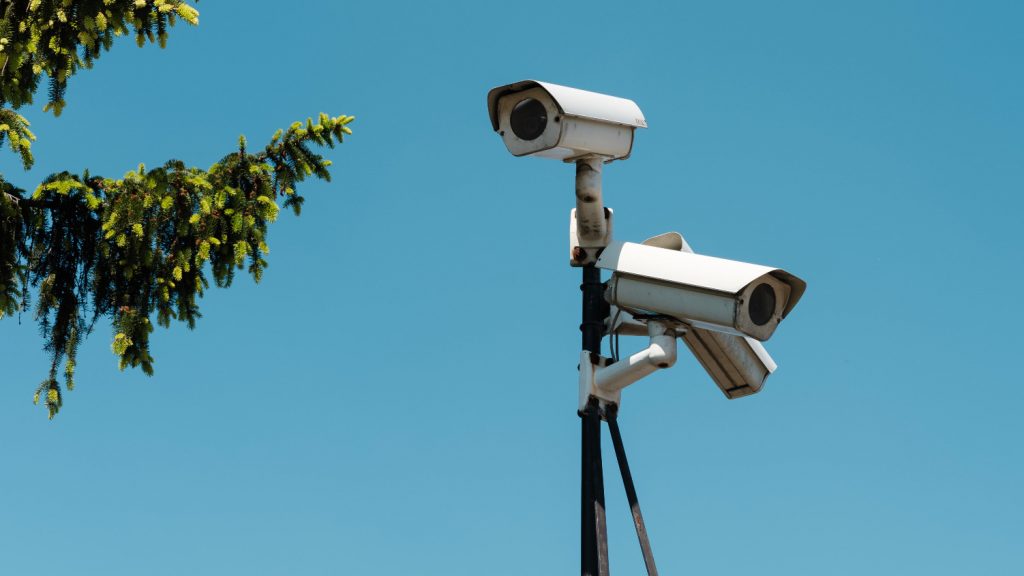Canadian Civil Liberties Association has ‘serious concerns’ about CCTV expansion in Ontario

Posted July 13, 2021 3:17 pm.
The Canadian Civil Liberties Association (CCLA) says it has “serious concerns” with Ontario’s plans to expand video surveillance coverage across the province and fears the technology could be used to unfairly target marginalized communities.
Last week the province announced an additional investment of $2 million to expand closed-circuit television (CCTV) systems, calling the cameras “an essential tool in detecting criminal activity and keeping communities safe.”
“Robust CCTV surveillance systems are an essential tool to help combat gun and gang violence and keep our communities safe,” Solicitor General, Sylvia Jones, said in a release. “That is why it is important that we continue to help police services and their municipal partners expand surveillance capacity across the province.”
“This investment will provide our policing partners with the technology they need to detect criminal activity and ramp up the fight against crime.”
The province’s latest investment will bolster the CCTV Grant program, which helps police and their municipal partners purchase CCTV equipment by covering 50 per cent of costs up to $200,000 for each successful project.
The province said the cameras would be installed in areas “with high rates of criminal activity including gun and gang violence.”
The CCLA’s Privacy, Surveillance, and Technology Project Director, Brenda McPhail, believes the system can be abused without checks and balances in place.
“It’s important to understand that not everyone experiences police surveillance equally or feels safer being watched by law enforcement,” she told CityNews. “Such experiences are grounded in the systemic racism and discrimination that data tells us directs the watchful eye of the law disproportionately toward people that are Black, Indigenous, otherwise racialized or marginalized.
“CCLA has serious concerns regarding the necessity and proportionality of expanding police use of video surveillance of residents in cities and towns across Ontario while failing to address the inequities that are the root causes of violence.”
McPhail says every time a camera goes up, it should be justified by “verifiable crime reports” and a privacy impact assessment should be conducted. Most importantly, communities should be consulted with and “clearly notified of the presence and location of the cameras.”
“Communities must be given a meaningful say in whether they wish to participate in an expansion of camera surveillance into their streets, particularly because cameras clearly fail to address the social inequities that are often the root of violence,” she said.
The Solicitor General’s office says the onus to assure those steps are taken would be on individual police forces.
“Each police service will be responsible to consult with privacy experts, if necessary, before proceeding with implementation of any CCTV’s approved through this grant,” Stephen Warner, Solicitor General spokesperson, told CityNews.
“The Ministry will require successful recipients to report back on the mandatory provincial outcomes and the associated indicators.”
The province did not say what those outcomes and indicators were.
The CCLA also expressed concern that the technology could be used in more intrusive, objectionable ways.
“CCLA would worry also regarding whether or not the new camera surveillance would be used in conjunction with facial recognition tools, which further ups the ante of invasiveness and expands privacy concerns correspondingly,” McPhail added.
Cameras won’t be used with facial recognition technology: TPS
The Toronto Police Service (TPS) confirmed to CityNews that it will be applying for the provincial grant, but tried to assuage many of the privacy concerns posed by the CCLA.
Toronto police spokesperson Meaghan Gray said CCTV cameras would not be used in conjunction with facial recognition technology, and are “not live monitored or used for surveillance purposes.”
“(The cameras) are only accessed by frontline officers in an emergency situation or major event. They are used to investigate post-offence incidents, assist in gathering evidence and possibly deter crime.”
Gray adds that a combination of crime statistics and community input help determine where the cameras are placed, and there is a notification process “with relevant community members and stakeholders, such as businesses, in areas the cameras may cover.”
“TPS has listened to communities, analyzed crime rates in specific areas, and focused on major crime indicators such as firearm-related incidents to assist in determining where cameras are located.”
Despite those assurances, McPhail still sees the expansion of video surveillance as an uncomfortable encroachment.
“The larger question is, do we want to live in a constantly surveilled community, and at what point does pervasive, street-level surveillance tip the balance between resident rights and state power past the point we’re willing to accept in a free, democratic country?”








